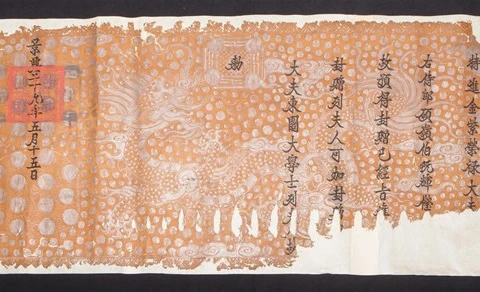Hanoi (VNA) – The art of pottery making of Cham ethnic people was inscribed in the list of intangible cultural heritage in need of urgent safeguarding by UNESCO on November 29.
The recognition was made at the 17th session of the Inter-governmental Committee for the Safeguarding of the Intangible Cultural Heritage in Rabat, Morocco, according to the Ministry of Culture, Sports and Tourism.
Cham pottery products are mainly household utensils, worship objects, and handicrafts such as jars (called “jek”), pots (gok), food trays (cambak), and vases (bilaok).
Pottery making is considered a demonstration of Cham women’s creativity on the basis of their community’s knowledge.
Notably, instead of using turntables, Cham women move themselves backward around blocks of clay to shape objects. The products are not laid with enamel but dried and baked outdoor in wood and rice straw fires at about 800 degrees Celsius for seven - eight hours.
Clay is sourced from the Hamu Tanu Halan field on the banks of the Quao River in Bau Truc village and the clay pit of Xuan Quang village, about 3km to the northwest of Binh Duc village, the central province of Ninh Thuan.
Despite preservation efforts, the pottery making is still at risk of disintegration due to the urbanisation process’s impact on the access to raw materials, the slow adaptation to the market economy, and young people’s lack of interest in the craft.
The pottery making of Cham people is the 15th intangible cultural heritage of Vietnam to be named in UNESCO lists./.
The recognition was made at the 17th session of the Inter-governmental Committee for the Safeguarding of the Intangible Cultural Heritage in Rabat, Morocco, according to the Ministry of Culture, Sports and Tourism.
Cham pottery products are mainly household utensils, worship objects, and handicrafts such as jars (called “jek”), pots (gok), food trays (cambak), and vases (bilaok).
Pottery making is considered a demonstration of Cham women’s creativity on the basis of their community’s knowledge.
Notably, instead of using turntables, Cham women move themselves backward around blocks of clay to shape objects. The products are not laid with enamel but dried and baked outdoor in wood and rice straw fires at about 800 degrees Celsius for seven - eight hours.
Clay is sourced from the Hamu Tanu Halan field on the banks of the Quao River in Bau Truc village and the clay pit of Xuan Quang village, about 3km to the northwest of Binh Duc village, the central province of Ninh Thuan.
Despite preservation efforts, the pottery making is still at risk of disintegration due to the urbanisation process’s impact on the access to raw materials, the slow adaptation to the market economy, and young people’s lack of interest in the craft.
The pottery making of Cham people is the 15th intangible cultural heritage of Vietnam to be named in UNESCO lists./.
VNA

























